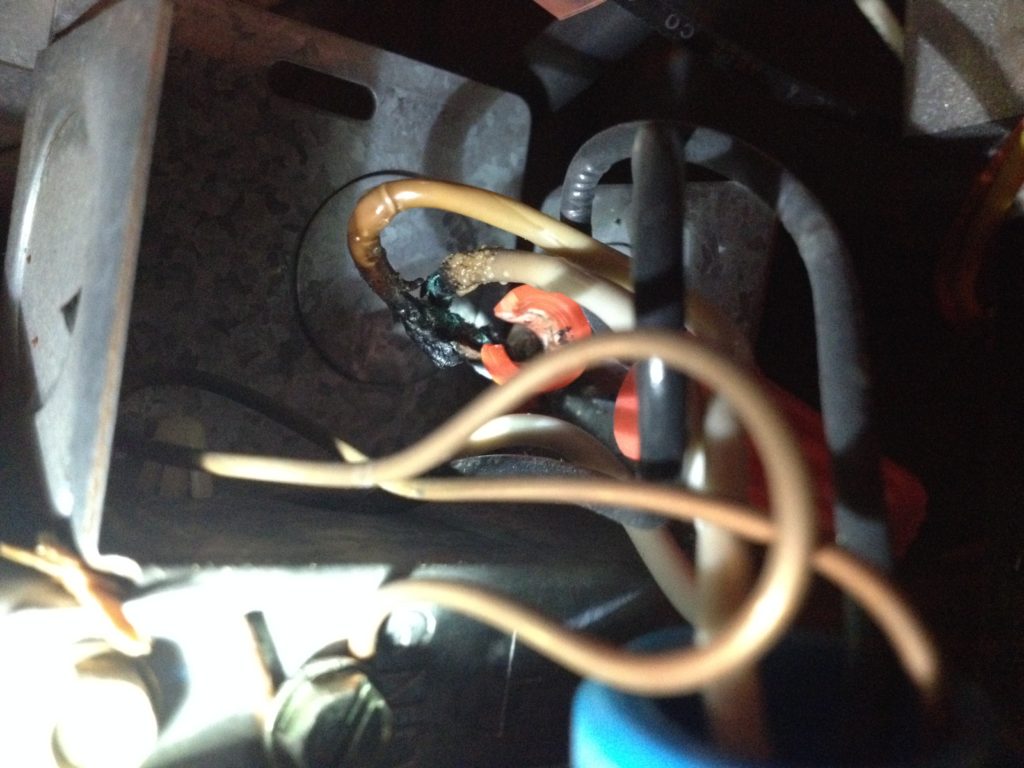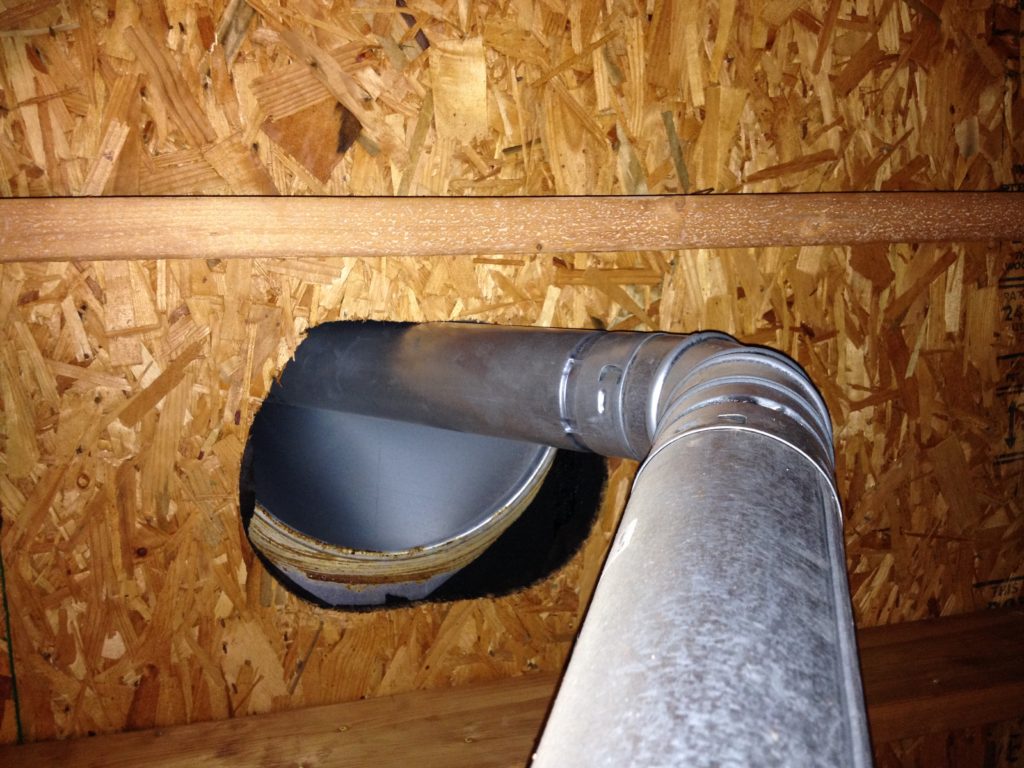The greatest off-grid danger is not being bitten by a poisonous snake or spider though I can’t stand either. It’s not being attacked by a grizzly bear but that is certainly dangerous! The greatest danger isn’t even freezing to death although it can get cold at times. In my personal experience, the greatest off-grid danger is a mindset!
I learned a great deal about residential dwellings having been in the construction trades for 20 years. I especially learned a lot about electricity and heating/air conditioning. During that time, I also got a pretty good education about human nature. Not just the nature of homeowners, but also contractors. I learned that there is a common mindset between many people in both groups. This mindset seems even more prevalent in those of us living off-grid, living in tiny homes, or both.
If it works, it must be right!
This mindset or attitude is one that believes “If it works, it must be right!” You turned on that new lighting circuit in your renovated bus so it must be right! Your new solar panels are charging the batteries so what could be wrong? The new wood stove didn’t catch the cabin on fire so it’s good! The propane heater is keeping your tiny house cozy which is what you wanted! That very mindset is “the greatest off-grid danger!” It works, so it must be right! Right?
That mindset injuries and kills people every year. It damages and destroys property. It costs untold amounts of money in repairs and hospital bills. A good part of my business’s revenue every year was due to homeowners and contractors having that mindset. Sooner or later, that faulty perception catches up with you and reveals itself. Sometimes, it’s not so kind!
Don’t get me wrong, I believe in doing things yourself to save money or produce an end result that will be pleasing. But, just because you “can do it” doesn’t always mean that it’s “wise to do it.” If you can’t do it safely and correctly, then it’s not wise to do it.
The danger of the internet “How To’s”
I commonly see the “it works” attitude while watching YouTube, reading blogs or browsing Instagram. That’s actually what prompted this post. I get concerned when I see folks performing electrical work who openly confess they have no training, experience or even own a “How To” book. Perhaps they are installing a vent free propane heater in their tiny home completely ignorant to the potential danger that may lay ahead. Unfortunately, some people just don’t realize how dangerous some DIY projects are. So below, is just a few recurring areas that I constantly see the “It works, so I must be right” attitude.
Improper Electrical Work
Nearly every man I’ve met believes that he has the ability to perform electrical work on some level. Because after all, either that light comes on or it doesn’t! The outbuilding has power or it doesn’t! If the light works and the building has power then the wiring is correct! Right? Wrong!
I could post hundreds of pictures that I’ve taken over the years of improper electrical work, mostly done by “electricians.” I know it was incorrect either because the National Electric Code says so or the melted wires and scorch marks say so. Either way, it’s still wrong.
One of the leading causes of structure fires is electrical related problems. I have personally seen homes where faulty electrical wiring performed by an “electrician” started a small fire in the crawl space and fortunately the fire failed to spread. These wiring failures weren’t blatant or glaring.
Sometimes it is something as simple as a wire staple being a bit too tight.

Other times it’s a wire splice performed incorrectly.

It could be a terminal screw on a breaker not tight enough.

It’s nearly always a basic, fundamental electrical “technique” that is the problem!
Renewable Energy
Solar Power, Wind and Hydro are completely different monsters compared to a grid tied structure! Not only do you have the 12 volt DC electricity but many other components. Sometimes people use components that aren’t UL Listed for 12 volt DC such as light switches and breakers. I have seen people charging batteries inside the residence that were venting explosive hydrogen gas. But hey, the systems works! Right?
If you have an “electrical fault” then that breaker that’s not rated for DC voltage may not trip! The contacts contained within the standard residential light switch may pit and start arcing, eventually causing a fire. A simple static electricity spark or open flame may ignite the hydrogen gas venting from the batteries and wreak havoc on everything within close proximity! The absence of a “ground fault circuit interrupter” protected circuit will kill you while standing in dew covered grass due to that unnoticed nick in the extension cord!
Starting your electrical project
(This post contains affiliate links, see site policies)
If you want to better understand how to perform electrical work correctly, then start by buying a quality electrical “How To” book written by a quality, seasoned, licensed electrician. I have seen and even bought electrical books that contained incorrect information. Some books aren’t even written by licensed electricians. So it is important to find a good one. Then, read it, study it, highlight it and mark it up. Customize it for your personal use! I have been fortunate enough to find one really good residential wiring and one really good solar power book
. If you insist on doing your own electrical projects then these books are a good starting place.
Improper Heating System Installation
In my opinion, heating system installation is just as difficult and just as dangerous as electrical work. In some cases, it’s more difficult and more dangerous. I would never recommend a homeowner attempt to install a central HVAC system. It’s just too complex and requires too many specialized tools. However, wood stoves and propane heaters are a different story. They aren’t nearly as complex and don’t require as many specialized tools.
The biggest danger
The biggest danger that I see with wood stoves or any fossil fuel appliance with a flue pipe is “clearance to combustibles.” In other words, there is a minimum distance that the appliance and its associated flue pipe has to maintain from anything that can burn or ignite. The appliance and flue pipe get hot and must maintain a certain distance from combustible objects like wood, shingles, cabinets, curtains, carpet, etc.

The installation manual that came with the appliance and flue pipe will show these necessary minimum clearances. If the manuals aren’t available, you should contact the appliance and flue pipe manufacturer. Also, local building codes may require a greater distance than the manufacturer requires.
The second biggest danger
The second biggest danger with small structures is combustion air for propane appliances and wood heaters. These appliances and heaters need fresh air for the combustion process to properly take place. The installation manuals normally give you a calculation to determine the available amount of combustion air in your house. This available air is measured by cubic feet. If your house or structure doesn’t meet the minimum requirements then the appliance could start having incomplete combustion. This is a deadly problem if your propane appliance is vent free. Meaning it has no flue pipe venting to the outside. Most modern vent free propane heaters come with an oxygen depletion sensor which shuts the appliance off if the oxygen drops to a near dangerous level. A structure built too tightly (for greater energy efficiency), will have problems with insufficient drafting with wood heaters and cause combustion problems with gas appliances if fresh air isn’t brought in somehow.
Potential Death
I installed a wall mounted, vent free propane heater in our cabin as our sole heat source. I performed the combustion air calculation which resulted in our cabin having enough air available for the heater. On our first really cold night the heater shut off around 2:00 A.M. Initially, I thought we were out of propane. I checked the tank which was fine. I tried to relight the pilot but the burner wouldn’t light. We ended up sleeping in the cold for the rest of the night.
The next morning the heater lit fine. A few nights later it got really cold and did exactly the same thing. The next morning it fired right up. I took the heater apart and couldn’t find anything wrong. The propane pressures checked fine. I decided to open a small fresh air vent that I had previously installed near the heater. Problem solved! Even though the calculations showed that I had more than enough fresh air, it wasn’t enough for a really cold night! The oxygen depletion sensor prevented us from potentially dying those cold nights.
A nuisance or danger?
Lastly, condensate can be a problem with vent free propane heaters. Propane has a higher moisture content than natural gas. It shows up on a vented gas heater via rust on the burners and other combustion related parts. On a vent free heater, it shows up with higher humidity and dew point in the heated structure. This feels great to the occupants. But if the structure has single pane or cheap double pane windows condensation will occur. Any exterior wall that has no insulation or poor insulation will be prone to condensation. This generally will be lower on the walls. This condensate can and will lead to mold if not dealt with! And there is no telling where the mold will lead. Nowhere, allergies, sickness, death? Who knows?
Improper Use of Propane Cooking Equipment
There is a common misconception with propane cooking appliances. That being, all of them can be used to cook inside! After all, many traditional houses have “gas ranges” and a “gas appliance is a gas appliance.” Right? Wrong!
There are two main differences between an appliance rated from the manufacturer for “indoor use” and one rated for “outdoor use only.”
First of all, an indoor use rated cooking appliance usually has safety features to reduce the potential for personal injury and property damage. Some cook stoves will actually turn off when knocked off the counter/table or accidentally turned over. The surfaces are safer to touch. In other words, they are bit more dummy proof. Not completely, just a bit more.
Secondly, indoor rated cooking appliances have a different burner design and therefore produce no carbon monoxide when operating properly. These designs increase the efficiency of the combustion process to at or near 99.9%. The flames are completely blue. No red or orange tips.
Our outdoor rated cook stove produces carbon monoxide levels of 13 ppm on medium low…

and 220 ppm on high.

My truck exhaust produces 45 ppm.
Carbon monoxide detectors
I performed many carbon monoxide checks in 17 years of servicing, repairing and installing gas furnaces and gas logs. I have found many of these producing low levels of carbon monoxide and the homeowner’s carbon monoxide detector never sounded the alarm! The standard carbon monoxide detector purchased in retail stores won’t begin detecting carbon monoxide until 50-70 ppm. Even then, it could take it 4 hours or more before sounding the alarm!
Has your detector ever been in RV, camper, cabin or other structure where the temperature reached 38 degrees F or below? How about temperatures above 100 degrees F? If it has, your detector may not work! According to Kidde, the limits of their detectors are 39 degrees F and 120 degrees F. The limits for First Alert detectors are 40 degrees F and 100 degrees F. Installation in a place outside of these limits may prevent the detector from working or cause it to fail. We’ve personally had 3 detectors to fail due to cooler temperatures in our cabin while we were gone in the winter. Don’t forget, carbon monoxide detectors normal life span is 5-7 years and 10 years for a smoke detector.
Trailer Towing
In my observation, many people don’t know how to legally and properly tow tiny homes. There is an attitude that if the truck can physically move the home and the truck’s bumper not dragging the ground then everything’s good! The truth is most trucks can’t legally tow a tiny home. Period.
I relinquished my Commercial Driver’s License when we moved to our current state. I drove a bus for several years and no longer desired to do so. There are a lot of laws governing vehicles and their weight. The weight of the vehicle, the weight in the vehicle, the weight of the trailer, the weight of the trailer’s cargo and the weight on the vehicle’s hitch. Your vehicle’s owner’s manual will tell you all of those weights or limitations about those weights. It’s not as much as you might think. No matter what you are towing, it’s your responsibility to know all your allowable weights and actual weights.
Factory is rarely enough
When we bought our tractor I had to make some changes to my Toyota Tundra that allowed me to safely and legally tow it. You would think a 6,000 lb. truck with 400 horse power and a towing package wouldn’t need any changes? After reading my truck’s owner’s manual I discovered that my total towing limit was 10,000 lbs. after making certain enhancements. I couldn’t legally or safely tow my 50 HP tractor as is.
We had to install an electronic trailer brake and a weight distribution system. We also had to buy a trailer ball rated for a minimum of 10,000 lbs. The existing 6,000 lb. rated ball had to go back in the tool box. For a bit of extra safety, I installed a “sway control kit.” You will want one if you ever have an 18-wheeler pass you! I then had to learn how to adjust the weight distribution system, the sway kit and trailer brake. Merely having these devices didn’t give me a silver bullet that cured all my problems.
Consider some improvements
You may have hauled your camper, tiny house or driven your converted bus or van with no previous issues. But if you are in an accident without the required devices or are overweight then there’s going be a problem. I have actually had a law enforcement officer drive beside my trailer and inspect it while traveling on the interstate! If you have a converted van or trailer, consider getting 10 ply (Load Range E) tires or better if you don’t already have them.
The best places to check the weight of vehicles and trailers are truck stops or land fills. You DO NOT want to do this at a “weigh station” on the side of the interstate or highway!! Any problems found at a “weigh station” will normally result in tickets and an end to your trip!
If you tow anything, verify that you are doing so legally. Weight distribution hitches, electronic trailer brakes and sway kits are worth their weight in gold when towing. Verify that your receiver, hitch and ball are all rated for the weight that you are towing. Also, check your trailer brake for proper operation every time you tow. I have personally seen trailer brakes fail and push a truck with its trailer past a stop sign into the intersection!
There’s never a problem until there’s a problem!
I had a HVAC instructor that used to say “There’s never a problem until there’s a problem!” That saying fits right in with “If it works, it must be right.” You see, the poor electrical work, the improperly installed heating system, improper trailer towing, etc. may never cause you any problems… until there is another problem.
Your flue pipe with the improper clearance to combustibles may never cause a problem. That is, until your stove over fires!
That “freeze proof” hydrant with the incorrect drain well worked great all Summer. That is, until freezing temps in the Winter cracked your water line.
That loose electrical connection or undersized wire may never cause you a minute’s trouble. That is, until you put a full load on it!
Pulling that 10,000 pound tiny house on wheels with a half ton pickup may not be a problem. That is, until a kid on a bike pulls out in front of you… or the “weight man” pulls you over… or an 18-wheeler passes you running 70 mph! (My brother saw a camper that had its entire side ripped off when an 18 wheeler passed it. There was no sway control installed and the wind from the truck caused it to slam into the concrete median.)
Tests will come
My point is, many things in this world work fine until they get tested. Sometimes it takes testing them to the worst case scenario. It may only take a simple change in the surrounding environment. Other things are actually causing harm but get unnoticed because they are out of sight or simply seem harmless. Some off-grid projects may never get tested. Others will get tested in due time. A brand new bridge in Florida recently failed after less than a week causing death and destruction. The news article stated that “it was being tested.”
Let me encourage you to evict the “it works, so it must be right” philosophy from your tiny home! It’s a danger to everyone and everything! Run it off your homestead! Banish it from your bus or van! Hang signs warning it to “Keep Out” of your cabin! Trust me, you and your loved ones will eventually be glad that you did.
Lastly, don’t forget what a court certified electrical expert once told me. “Ignorance is not a defense in a court of law!” “If you don’t know what you are doing, then why are you doing it.” I’ve never forgotten those words! I hope that you won’t either!
Ambitious Feller
“If the women don’t find you handsome, they should at least find you handy!” Red Green









